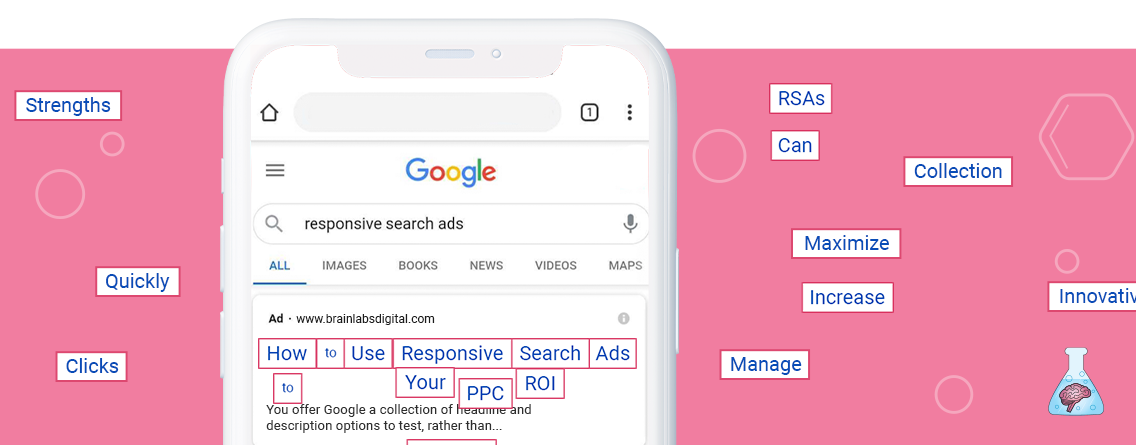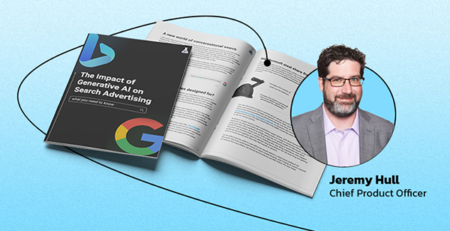How to use Responsive Search Ads to improve your PPC ROI
In the world of pay-per-click advertising, maximizing return on investment is the name of the game. While that’s technically true of everything in business, it’s especially important in PPC, as you can quickly blow through your advertising budget if you aren’t optimizing your campaigns properly. At Service Direct (my employer), we manage thousands of PPC campaigns for our clients, so even the tiniest gains to our margins can make a big impact. If you would like to tune up your ads and get a better return than ever before, consider implementing Google’s Responsive Search Ads.
What is a Responsive Search Ad?
The concept of Responsive Search Ads is one that makes many marketers a little uncomfortable, at least at first. However, once you start to understand the potential power that these types of ads can deliver, the idea becomes hard to ignore.
It works like this: rather than setting up static ads that combine the same headlines and descriptions each time, you offer Google a collection of headline and description options to test. Over time, Google Ads will automatically mix and match your headlines and descriptions in an effort to find winning combinations. In essence, you are giving up some of the control over your text ads and trusting the intelligence of the Google algorithms to settle on the right blend of headlines and descriptions to draw maximum clicks.
The Basics of Responsive Search Ads
There is plenty to learn about writing copy for responsive ads – more than we could cover in this single article. Let’s quickly touch on some of the basics to get you started.
- You are able to add as many as 15 headlines and 4 descriptions for a responsive ad. These will then be combined in various ways as the campaign goes along.
- It’s important to avoid redundancy when you write your copy. Since you don’t know how the headlines and descriptions will be combined, you don’t want them to say basically the same thing.
- Use the ability to write so much copy to touch on all the various strengths and selling points of your business.
Overcoming Skepticism
As a marketer, it is easy to become stuck in your ways. When you find something that works, you just want to ride that successful formula without venturing too far into the unknown. That tendency is understandable, but it can also cause you to fall behind the competition.
Initially, we were a little hesitant to embrace this new form of advertising ourselves. However, we set that aside and decided the only way to know if it worked was to try it out. And, getting our Responsive Search Ads up and running, we were pleasantly surprised by the outcome.
The key was how the optimization of our ads improved our AdRank, which in turn led to a greater number of impressions. In fact, we more than doubled our impressions when we used Responsive Search Ads, which is a powerful change, to say the least.
The Results that Matter
Of course, simply improving impressions doesn’t do much good if no one actually clicks on those ads. And, it was true that our click through rate fell – but only by 5%. We would encourage you not to dwell too much on clickthrough rate while considering responsive ads. Even giving up a bit of CTR will be well worth it when you consider how many more clicks you are getting as a whole.
Finally, we need to address the topic of conversion rate. At the end of the day, this is what we are all here for – to turn clicks into customers. Impressively, and perhaps a bit surprisingly, we found that our lead conversion rate went up by 5% while using responsive ads. So, we were getting more clicks, and those clicks were converting more often. Based on these results, we’d say that Responsive Search Ads are certainly worth a look in your own marketing efforts.
A Couple of Other Keys
Even with something as modern and high-tech as responsive ads, you still can’t just sit back and expect outstanding results. Plenty will be required on your end, and we have a couple of extra keys to highlight here that may help you optimize this kind of campaign.
- Continue to test. Persistent testing is one of the core fundamentals of any marketing endeavor, and you don’t want to give up on testing just because you use responsive ads. You can continue to test different copy for your headlines and descriptions to track not only how many clicks you can draw, but how copy changes impact conversion rate.
- Save top performers. As you monitor your responsive ad campaigns, you will see which ad combinations are performing better than the rest. Then, you can simply use those as standard ads, so the headline and description are always paired together in a way that has been proven to work.
The Way of the Future?
We would not be surprised to see Responsive Search Ads take over more and more of the Google ad platform in the years to come. So, if these kinds of ads are going to be the standard for PPC advertising moving forward, why not get started now? By learning the ropes as soon as possible and fine tuning your methods, you may be able to get a leg up on the competition. Good luck!
About the author
Ty Alyea is Director of Search Marketing Product at Service Direct, where he is responsible for creating and managing thousands of digital ad campaigns across hundreds of local service industries for 1,000+ clients across North America. He has a B.A. from UCLA as well as an M.A. and PhD from the University of Texas at Austin.




